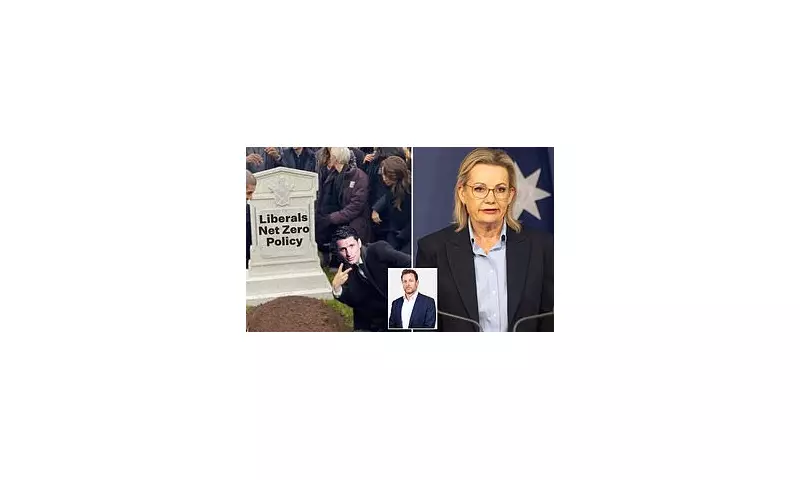
The political future of Sussan Ley as Liberal Party leader appears increasingly uncertain, with internal party discussions now focusing on when rather than if a leadership challenge will occur.
Two main contenders have emerged as potential successors: Angus Taylor, the experienced frontbencher who narrowly lost the previous leadership contest, and Andrew Hastie, the former SAS officer from Western Australia representing a generational shift for the party.
The Leadership Contenders: Experience Versus Generational Change
At 43 years old, Andrew Hastie embodies the generational change many Liberals believe is necessary for a party that has been described as resembling a retirement village for former political staffers. In contrast, Angus Taylor approaches 60, with the Coalition likely facing at least two if not three more terms in opposition following their comprehensive defeat in metropolitan Australia during this year's federal election.
The Liberals are experiencing significant bleeding among younger voters, giving Hastie potential appeal as he represents an outer metropolitan marginal seat. However, his opposition to the net zero emissions target presents a substantial obstacle, given polling consistently shows this policy is essential for attracting younger voters.
Hastie has openly embraced this position, even reposting WA Labor's attack post about his stance on his personal Instagram account.
Hastie's Military Background and Political Profile
Andrew Hastie's background reads like a script tailored for an era of increasing geopolitical anxiety. He attended the Australian Defence Force Academy, served in Afghanistan, gained selection into the SAS, and commanded deployments across Afghanistan, the broader Middle East, and Indo-Pacific theatres.
His political career accelerated quickly after entering parliament in 2015, chairing the Parliamentary Joint Committee on Intelligence and Security where he scrutinised counter-terrorism, espionage and foreign interference laws. He later served as Assistant Minister for Defence during the final days of the Morrison government.
In opposition, Hastie acted as Peter Dutton's shadow defence minister before a brief stint in home affairs prior to his recent resignation. A significant gap in his political CV remains his limited experience with domestic policies, which prompted his request for a portfolio shift after the last election - a request denied by Sussan Ley.
This lack of senior domestic portfolio experience represents a weak spot in Hastie's leadership credentials, as it is unusual for leaders to emerge without such background.
High-Risk Leadership Gamble for Liberal Future
Andrew Hastie's potential leadership represents what many insiders describe as a high-risk, high-reward gamble for the Liberal Party. His long-standing hawkish position on China, including his 2019 warning that the West risked repeating the mistakes of French strategists facing Nazi Germany, demonstrated his willingness to challenge bipartisan complacency in Canberra's China policy.
While business leaders and Beijing criticised this stance, many in the security establishment quietly applauded his intervention. In a political landscape often paralysed by focus-group research, Hastie's willingness to articulate his beliefs directly may appeal to disillusioned Liberal members seeking conviction politics.
However, significant challenges remain. His brand of politics might not align with Australia's unique compulsory voting system that uses preferences to decide winners - a system that typically thwarts the sort of populist movements that succeed abroad, which Hastie appears to emulate.
The mechanism of any leadership takeover also presents difficulties. To secure the position, Hastie would need to remove Sussan Ley, the first woman to lead the federal Liberal Party and the first female Opposition Leader in Australian history. Toppling her too soon would reinforce negative narratives about the party's issues with women, particularly if Hastie is perceived as wielding the knife.
Ideologically, Hastie faces another hurdle. On social questions, he stands out of step with the median voter in inner urban and teal-held seats that the Liberals must win back to form government. The question remains whether modern Australia would embrace a younger social conservative leader.
Concerns about Hastie's judgement persist within sections of the party room. Despite his military discipline, he remains largely untested under the sustained pressure of leadership or the spotlight of a national election campaign. His social media presence has occasionally hinted at culture-war populism, leaving even natural allies questioning his maturity and instinct for restraint.
His recent resignation from Ley's frontbench as shadow home affairs minister, following what he described as being sidelined from the Coalition's immigration review, signals his willingness to walk away rather than compromise within the team. This stance could challenge the Liberal Party's claims of being a broad church.
The policy positions Hastie has championed illustrate the high-risk nature of his potential leadership. In recent months, he has been central to internal efforts to abandon the Liberal Party's commitment to net zero emissions, publicly describing the policy as an economic straitjacket and threatening to leave politics if maintained.
His push for tougher immigration cuts, arguing that over two-thirds of Australians want reduced immigration and people feel like strangers in their own country, carries undertones that concern moderate colleagues.
These positions could either destroy his prospects of ever becoming Prime Minister or transform him into a political game-changer. The coming weeks will determine whether Liberal MPs believe muddling through the centre has failed and whether only a bold reset led by a conviction politician like Andrew Hastie can revive their fortunes.





